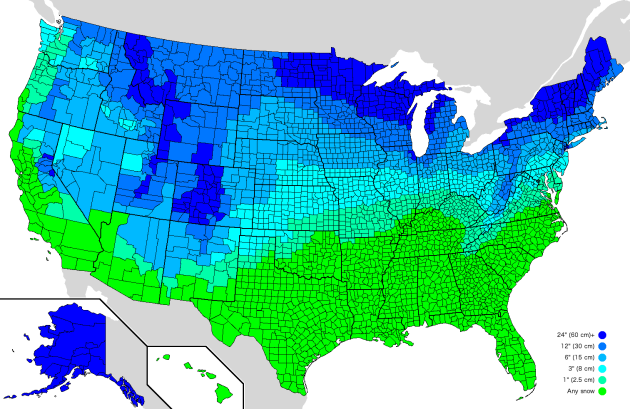1) TO SAVE THE STREET, DUMP THE SKYWAYS

Can Nicollet Mall in Minneapolis ever live up to the potential that urban planners have outlined over the decades? Yes, says street.mn’s Sam Newberg of the coming “revisioning” of the street, but first tear down the skyways that cross it.
The last time Nicollet Mall was to be reconstructed — 28 years ago — an expert suggested the very same thing. The City Council didn’t listen.
However, we did build new or replace skyways, and we have fewer retailers that front Nicollet (that’s how the street has been “steadily deteriorating”). To be sure, new restaurants and their patios have helped, but we still allow office and private uses to front the street, and that’s a shame. Recall that where Let it Be, Sawatdee, Key’s, and the Christian Science Reading Room used to be there is not a single retail door facing Nicollet Mall that a member of the public can use. Sure, Target has a private playground in the space, but it’s like a fishbowl and that block is devoid of public life, not “vibrant” nor “must-see.” Keep in mind that the most vibrant block faces with the most retailers are found along the east side of Nicollet between 8th and 10th Street – primarily in buildings that pre-date skyways. We can learn from the past, and a form-based code can help maximize the number of retailers facing Nicollet in the future.
The foot traffic on the mall eclipses that in the nearby skyway, Newberg notes. And the foot traffic would soar without them. “Because skyways exist,” he says, “we have to bend over backwards to get people down to street level, instead of it naturally occurring.”
But what about accessing the skyways? Simple, he says. “Use the sidewalk, enter a building and go upstairs.”
2) HOW MUCH SNOW DOES IT TAKE TO CANCEL SCHOOL?
At first glance, we conclude that the data used to make the map is generally flawed, unless you believe it takes on average two feet of snow to cancel school in northern Minnesota. Nonetheless, it’s zipping around the Internet today with a little shove from The Atlantic.

But Alexandr Trubetskoy found something more fascinating in assembling the map: In our neck of the woods, temperature is more of a deciding factor than snowfall amount.
In much of the Midwest and Great Plains, school closing often depends more on wind chill and temperature than on snow accumulation (“cold days”). Thus, this map may be misleading in those areas.
Many jurisdictions in California and other western states have significantly varied snowfall, depending on elevation. This makes it difficult to find an “average” number, or often makes it misleading.
Urban areas like Chicago and New York have more resources to clear snow and often need more to cause closings.
Clarification: The lightest green says “any snow” but also includes merely the prediction of snow.
Clarification II: This is snow accumulation over 24 hours/overnight.
Hawaii does get snow! Just… not where people live.
School closures say more about an area’s infrastructure than the toughness of its citizens, The Atlantic says.
Meanwhile, the arguments are still flickering over whether and by what standard schools should be closed here. In fact, the Star Tribune’s editorial page has an answer for those of you who don’t think schools should have been closed during the cold spell:
The last four school closings this month — including two this week — were rightly made by individual district leaders. Situations vary from district to district, region to region. For example, some school systems park buses indoors, while others do not. In below-zero weather, where a vehicle is parked at night can affect whether it will start in the morning. Even if buses are on time, consider the long walks some students have to bus stops.
This month’s closures also highlight differences between family needs today vs. a generation or two ago. One superintendent recalled times when all weather-related closing calls were made by 6 a.m. or so the same day. That was sufficient years ago, when many moms were at home while dads went to work. But today, with so many single parents and moms and dads at work, families need as much advance notice as possible to make other arrangements.
Meanwhile, they’re slowly getting back to normal in Atlanta following this week’s massive two-inch snowfall. But here’s a neat story behind the headlines, this one involving Michael Russo, the hockey writer for the Star Tribune. He and his mother, Barbara Tabin, who lives in Georgia now, were driving four miles, only made it a quarter of the way and after four hours, decided to hoof it. They were to to sit Shiva at her youngest son’s home. Her husband, Lenny, died on Sunday.
I kept thinking of the Little Engine That Could,” Tabin, a retired speech pathologist at a school in Florida, tells the Atlanta Journal Constitution.
“That’s how I felt, you can do it, you can do it, keep going, keep going,” she said.
When they finally made it, they found the Shiva had been canceled.
“It was the dichotomy of life and death,” she said. “My husband had died, but he was there encouraging me. He hadn’t left me.”
3) THE COMMERCIAL DRONE WAR HAS ALREADY STARTED
It won’t be long before the FAA is overwhelmed by the drones. The agency, which, if you listen to enough aviators, has ruined general aviation, is trying to keep the drone genie in a bottle while it comes up with regulations, but too many people have them and want to use them. They’re as simple as quad-copters. Real estate agents are using them to photograph property that’s for sale, hobbyists are flying them, and newspeople want to start using them to get better angles on news stories (and probably put helicopter pilots and their companies out of business).
It’s unlikely the FAA can keep them all at arm’s length, try as it might. But, the NPR reports, the agency has put the kibosh on a brewer’s plan to deliver beer to fish houses on Lake Mille Lacs.
Lakemaid Beer president Jack Supple’s mistake: He made a video, put it on Vimeo, it went viral, and the FAA saw it. Leave the video out, and the aerial bar is open on the lake, people.
That seems to be the only way the FAA is finding out about all of the mostly-illegal commercial use of drones. Some news organizations made the same mistake. They were caught and grounded and, the Poynter journalistic think tank says, they’re getting tired of waiting for a federal agency to develop the regulations that — it’s fairly safe to say — many people are going to ignore and the FAA is ill-equipped to fully police.
“How is it that anyone can go down to a hobby store and fly this around, and me, with $30,000 worth of equipment, I can’t do this?” asked Matt Waite, a journalism professor at the University of Nebraska and founder of the school’s Drone Journalism Lab.
In theory, setting regulations for the commercial use of drones makes sense. In practice, most pilots will tell you, it’s going to be chaos.
4) ROD CAREW’S MISSION
Former Minnesota Twin Rod Carew lost his daughter to leukemia in 1996. Michelle was just 18 when she died. He’s been traveling the country raising awareness and money since.
Yesterday, he was the keynote speaker at a luncheon for the 49th Hutch Award, which honors an Major League Baseball player who has demonstrated outstanding community service.
“I didn’t lose my daughter,” Carew said. “My daughter was put here for a reason … so that every child that’s lived because of what I do when I travel across the country asking people like you to help, they’re one of mine.
“It’s the greatest feeling anyone can have, and my daughter taught me all about it. Until the day I die, that’s what I’m going to do.”
5) THE LEGEND OF DERRICK COLEMAN
The legend of Derrick Coleman grows. The Seattle Seahawk has overcome deafness to be an NFL player. I wrote earlier last week about a letter he received from a hearing-impaired girl. They finally met this week. He gave her and her sister tickets to the Super Bowl.
Bonus I: Tired of winter and don’t think you’ll make it to spring? Get in touch with your inner polar bear.
Bonus II: New Saints ballpark renderings posted (Ballpark Digest).
TODAY’S QUESTION
Do you agree with the decision to pursue the death penalty against Dzhokhar Tsarnaev?
WHAT WE’RE DOING
Daily Circuit (9-12 p.m.) – First hour: The Friday Roundtable discusses reforming or changing drug policy and/or treatment.
Second hour: Minnesota’s health disparities.
Third hour: Pianist/composer Volker Bertelmann.
MPR News Presents (12-1 pm) – –Former defense secretary Robert Gates, speaking at the Reagan Presidential Library about his controversial new book, “Duty: Memoirs of a Secretary at War.”
Science Friday (1-2 p.m.) – Steven Hawking has changed his view on black holes, saying they might be grey instead. Is it a sign of the crisis in physics? On today’s show Nobel Prize winners discuss current cosmological challenges. Plus, move over polar bears. Are penguins the new poster children for climate change?
All Things Considered (3-6:30 p.m.) – MPR’s Dan Olson visits Pillsbury Elementary school in Minneapolis, where young students who’ve never skied are training for their first ski outing in the Minne-Loppet, one of the City of Lakes Loppet events.
Former Pittsburgh Steeler Sean Morey retired from the NFL a few years ago. He left with nearly 10 years of professional experience and a Super Bowl ring. But the player also left with the long-term effects of post-concussion syndrome. Morey talks to NPR about football and brain injury today.
